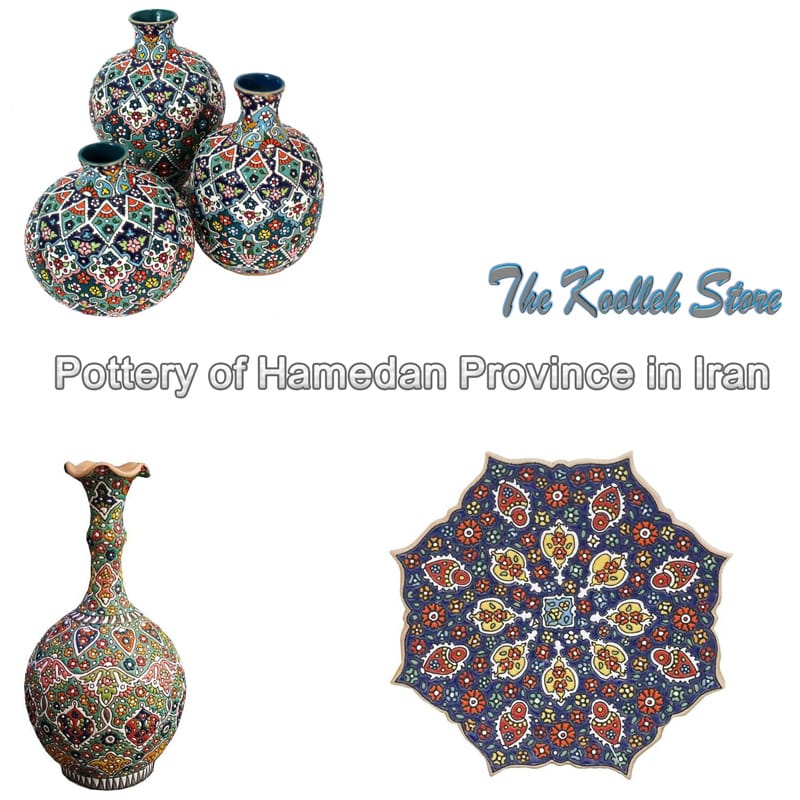Pottery of Hamedan Province in Iran

It seems as if in ancient times, the first human artifacts started from the role of mud pots, which at that time were made without the help of pottery wheels and with the help of fingers and cooked in the trash kilns. Now, after a few thousand years, pottery-makers are still working on a bowl of pottery to express life’s motives and aspirations. But the folklore of this time is written in the light of the wishes of those who live in the light of the needs of today’s life.
Currently, the most important pottery centers in Hamadan province, Laleh Jane – about 25 kilometers from Hamadan and Farsfaj in Tuyserkan. From the point of view of history, Laljin pottery was made in two parts: first up to seventy eighty years ago, and the other up to twenty or thirty years ago.
The difference is obvious in the shape of the bowl, the glazes, the engravings and the etching method. In the first part, the bowls are slightly larger and the mouth is wider, and the glazes and variety of glazes are larger, and the engravings are done with a narrower nose and longer.
The brush was found to be slow, and the potter did not feel the passing of time and was overwhelmed by the intricacies of life in his artistic thoughts and wanted to leave the bowl unused and painted everywhere. She was fit for a role, but she was careful not to disrupt the coordination of roles.
Although he used visualization, he did not miss out on various roles.
Somewhere he has the role of the chicken and the other the role of the fish, in the bowl the peacock and in the other the woman’s face, a woman with black and arched eyebrows and a continuous, almond-shaped eye with the same eyebrow. It is clear that what the artist had in mind for the beloved beauty was far more brilliant than the role of this bowl.
In the bowls of the same section the first role of the bird and the large fish is laid out. The bird can on the one hand be a symbol of the garden and the green of the garden, on the other hand it can be a symbol of the artist’s heavenly wishes. The fish is both beautiful and clean because it lives in the water and the water has always been our favorite Iranians.
Another characteristic of these first bowls is that they have only painted the role and the paintings with the help of lines and surfaces covered with colored candles, and used shadows that obscure and reduce clarity and clarity. .
These bowls are covered with a white glaze that resembles porcelain. It is not as solid and delicate as the Chinese, but better than the Chinese. For the past fifteen years, of course, La Jaines have been reluctant to embellish pottery because of the commercial aspects of their work and craft and the fact that the artistic values of their work have been sacrificed for low value.
Currently, pottery making in Lalehin, Hamedan, has increased dramatically compared to the past and even every year compared to the previous year, but in terms of quantity and number of contractors and annual production, it has been increasing day by day.
Hamedan’s tulip index was characterized by turquoise, green, mustard and brown colors and included fully consumed products and we have witnessed a relative decline in quality and roles over time, though still pottery In Laleh Jane, “Art-Industry” is the province of Hamedan and Laleh Jane is the largest pottery center of Iran.
